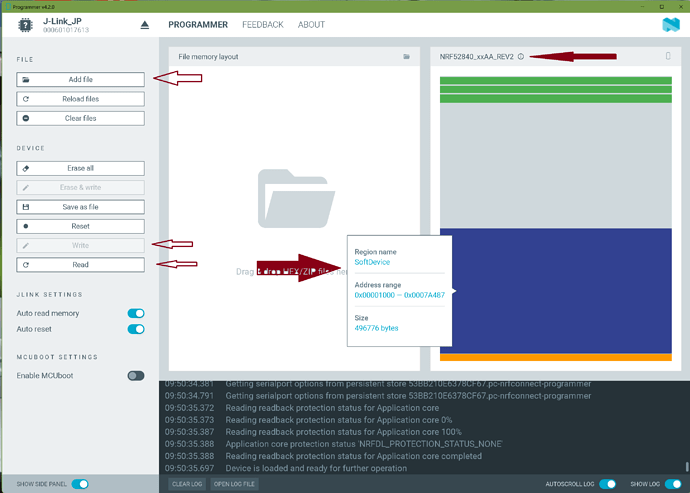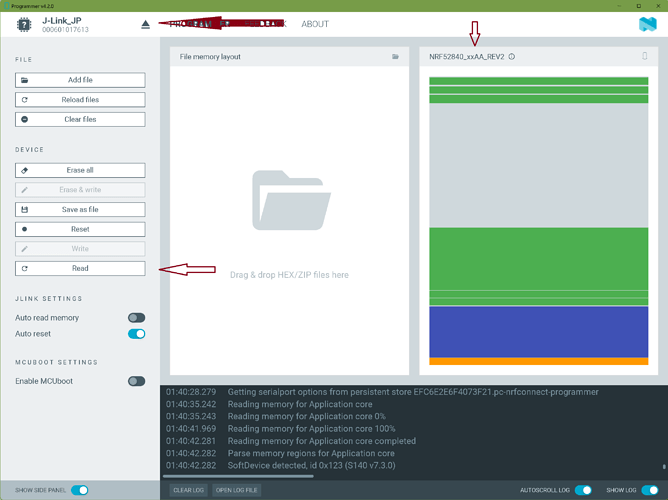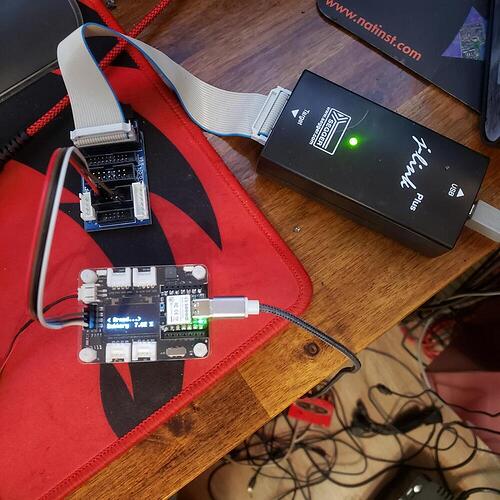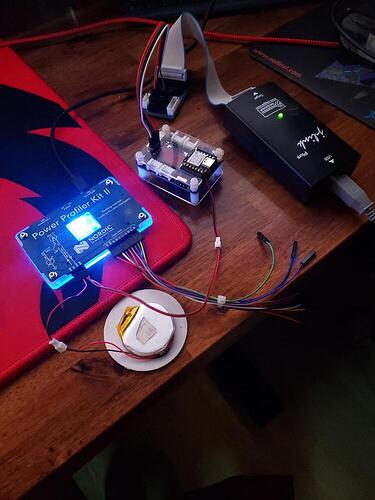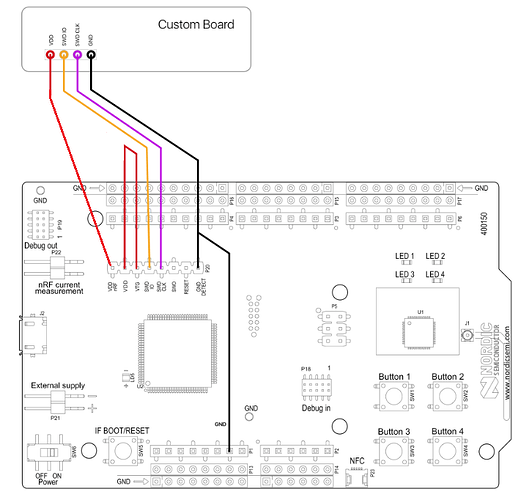Hello.
I apologize for not answering right away, because there are so many things to do at the same time, I can’t manage everything at once.
As for the code. I have the following code but it doesn’t work, I contacted Curtis (who made the Antplus-Arduino library) and he told me to program the S340 soft-device.
He also sent me a link to a step-by-step guide, but it seems that it is a little out of date, at least that’s what its author writes.
Here is the guide: S340 SoftDevice & Adafruit nRF52840 Express Feather | Blogarak a fejemben
It looks like what I need. Simple, step by step. The only thing is that I have a Seeed Sense nRF52840, but I think it won’t be difficult to try to do it by analogy.
And here is my code itself:
/***********************************
* AntPlus HRMonitor example
*
* Implements a HR Monitor sensor with
* mocked data to it and then reports
* all events through the serial port
*
* This is a minimum viable example
* all additional datapages are optional
* and are enabled through flags passed
* into the profile
*
* It is highly recommended you read the documenation at
* https://github.com/cujomalainey/antplus-arduino/wiki/HeartRate-Monitor-Profile
*
* Author Curtis Malainey
************************************/
#include <Arduino.h>
#include "ANT.h"
#include "ANTPLUS.h"
#define BAUD_RATE 9600
#define CHANNEL_0 0
const uint8_t NETWORK_KEY[] = {0x00, 0x11, 0x22, 0x33, 0x44, 0x55, 0x66, 0x77}; // get this from thisisant.com
uint32_t flags = 0;
ArduinoSerialAntWithCallbacks ant;
AntPlusRouter router;
ProfileHeartRateMonitor hr(123, 0, flags);
// void batteryStatusDataPageHandler(HeartRateBatteryStatusMsg& msg, uintptr_t data);
// void capabilitiesDataPageHandler(HeartRateCapabilitiesMsg& msg, uintptr_t data);
// void cumulativeOperatingTimeDataPageHandler(HeartRateCumulativeOperatingTimeMsg& msg, uintptr_t data);
void defaultDataPageHandler(HeartRateDefaultMsg& msg, uintptr_t data);
void manufacturerInformationDataPageHandler(HeartRateManufacturerInformationMsg& msg, uintptr_t data);
// void previousHeartBeatDataPageHandler(HeartRatePreviousHeartBeatMsg& msg, uintptr_t data);
void productInformationDataPageHandler(HeartRateProductInformationMsg& msg, uintptr_t data);
// void swimIntervalSummary(HeartRateSwimIntervalSummaryMsg& msg, uintptr_t data);
void populateBaseHeartRate(HeartRateBaseMainDataPageMsg& msg);
void setup() {
Serial1.begin(BAUD_RATE);
ant.setSerial(Serial1);
delay(15000);
Serial.begin(BAUD_RATE);
Serial.println("Running");
router.setDriver(&ant); // never touch ant again
router.setAntPlusNetworkKey(NETWORK_KEY);
router.setProfile(CHANNEL_0, &hr);
// Delay after initial setup to wait for user to connect on serial
// hr.createHeartRateBatteryStatusMsg(batteryStatusDataPageHandler);
// hr.createHeartRateCapabilitiesMsg(capabilitiesDataPageHandler);
// hr.createHeartRateCumulativeOperatingTimeMsg(cumulativeOperatingTimeDataPageHandler);
hr.createHeartRateDefaultMsg(defaultDataPageHandler);
hr.createHeartRateManufacturerInformationMsg(manufacturerInformationDataPageHandler);
// hr.createHeartRatePreviousHeartBeatMsg(previousHeartBeatDataPageHandler);
hr.createHeartRateProductInformationMsg(productInformationDataPageHandler);
// hr.createHeartRateSwimIntervalSummaryMsg(swimIntervalSummary);
Serial.println("===========================");
hr.begin();
}
void loop() {
// Call this very frequently
router.loop();
}
void printDpMsg(int dp, const char* s) {
Serial.print("Sending DataPage: ");
Serial.print(dp);
Serial.print(" - ");
Serial.println(s);
}
/* Optional */
// void batteryStatusDataPageHandler(HeartRateBatteryStatusMsg& msg, uintptr_t data) {
// printDpMsg(7, "Battery Status");
// populateBaseHeartRate(msg);
// }
/* Optional */
// void capabilitiesDataPageHandler(HeartRateCapabilitiesMsg& msg, uintptr_t data) {
// printDpMsg(6, "Capabilities");
// populateBaseHeartRate(msg);
// }
/* Optional */
// void cumulativeOperatingTimeDataPageHandler(HeartRateCumulativeOperatingTimeMsg& msg, uintptr_t data) {
// printDpMsg(1, "Cumulative Operating Time");
// populateBaseHeartRate(msg);
// }
void defaultDataPageHandler(HeartRateDefaultMsg& msg, uintptr_t data) {
// All fields are reserved
printDpMsg(0, "Default");
populateBaseHeartRate(msg);
}
void manufacturerInformationDataPageHandler(HeartRateManufacturerInformationMsg& msg, uintptr_t data) {
printDpMsg(2, "Manufacturer Information");
populateBaseHeartRate(msg);
msg.setManufacturerIdLsb(78);
msg.setSerialNumber(0xabcd);
}
/* Optional */
// void previousHeartBeatDataPageHandler(HeartRatePreviousHeartBeatMsg& msg, uintptr_t data) {
// printDpMsg(4, "Previous Heart Beat");
// populateBaseHeartRate(msg);
// }
void productInformationDataPageHandler(HeartRateProductInformationMsg& msg, uintptr_t data) {
printDpMsg(3, "Product Information");
populateBaseHeartRate(msg);
msg.setHardwareVersion(1);
msg.setSoftwareVersion(2);
msg.setModelNumber(3);
}
/* Optional */
// void swimIntervalSummary(HeartRateSwimIntervalSummaryMsg& msg, uintptr_t data) {
// printDpMsg(5, "Swim Interval");
// populateBaseHeartRate(msg);
// }
void populateBaseHeartRate(HeartRateBaseMainDataPageMsg& msg) {
static uint8_t toggle = 0;
static uint8_t hr = 0;
static uint16_t eventTime = 0;
static uint8_t count = 0;
msg.setPageChangeToggle(toggle++ < 4);
msg.setComputedHeartRate(20*sin(hr++) + 120);
msg.setHeartBeatEventTime(eventTime);
msg.setHeartBeatCount(count++);
if (toggle >= 8) {
toggle = 0;
}
eventTime += 120;
}
Actually, this is just an example from Curtis. It seems to be working, it says “Sending data” to the console (Serial port), but the Garmin device does not see it.

